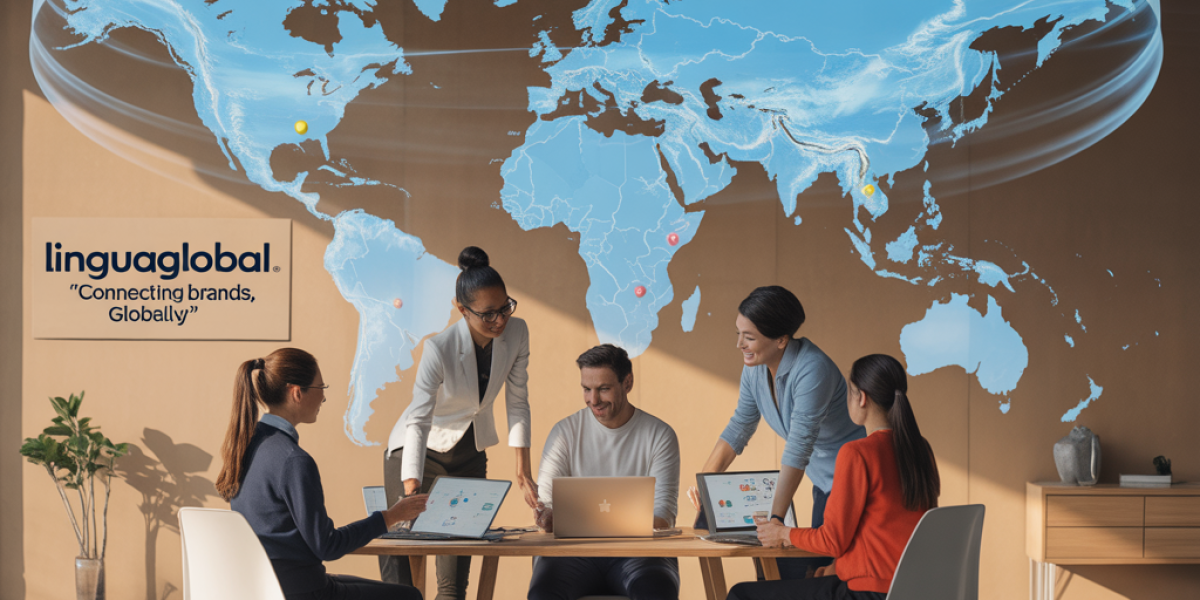In today’s hyper-connected digital world, businesses are no longer confined by geographical borders. The global marketplace offers unprecedented opportunities for brands to expand their reach, connect with diverse audiences, and grow their customer base. However, with this opportunity comes a significant challenge: how to communicate effectively across languages and cultures. This is where the power of translation in global marketing becomes not just beneficial—but essential.
Translation is far more than replacing words from one language to another. It’s a strategic tool that enables brands to build trust, foster engagement, and drive conversions in international markets. When done right, translation transforms marketing messages into culturally relevant, emotionally resonant content that speaks directly to local audiences. In this article, we’ll explore why translation is a cornerstone of successful global marketing, the pitfalls of poor translation, and best practices for leveraging translation to maximize your international impact.
Why Translation in Global Marketing Matters?
The world is multilingual. According to Ethnologue, there are over 7,000 languages spoken globally, with more than half of the world’s population speaking at least two languages. Even in English-dominant countries, millions of people prefer consuming content in their native language. For example, a Common Sense Advisory report found that 76% of consumers are more likely to buy a product if the information is in their native language.
This linguistic diversity presents a powerful opportunity. By translating marketing content—whether websites, social media, product descriptions, or advertising campaigns—brands can significantly increase their visibility, credibility, and conversion rates in foreign markets.
Consider this: a business that only markets in English may miss out on over 6 billion potential customers who don’t speak English as their first language. In contrast, a brand that invests in high-quality translation can tap into new markets, build stronger customer relationships, and gain a competitive edge.
Beyond Words: Cultural Localization and Context
Effective translation in global marketing goes beyond literal word-for-word conversion. It involves localization—the process of adapting content to fit the cultural, social, and emotional context of a target audience.
For example, colors, symbols, humor, idioms, and even date formats carry different meanings across cultures. A slogan that works in the U.S. might fall flat—or worse, offend—when translated directly into another language. Take the famous example of KFC’s slogan “Finger-lickin’ good,” which was mistranslated in Chinese as “Eat your fingers off.” While humorous in hindsight, such errors can damage brand reputation and reduce consumer trust.
Localization ensures that marketing messages are not only linguistically accurate but also culturally appropriate. This includes:
- Using region-specific idioms and expressions
- Adapting visuals and design elements to local preferences
- Respecting religious, historical, and societal norms
- Aligning with local holidays, traditions, and values
For instance, McDonald’s successfully localizes its menu and marketing campaigns worldwide. In India, where beef is culturally sensitive, McDonald’s offers a range of vegetarian options and promotes them with region-specific advertising. This level of cultural awareness, supported by precise translation, has helped the brand thrive in diverse markets.
The Business Impact of Professional Translation
Investing in professional translation services can yield significant returns. Here’s how:
1. Increased Market Penetration
When your website, product labels, and promotional materials are available in the local language, you remove a major barrier to entry. Customers are more likely to engage with a brand that speaks their language, leading to higher traffic, longer site visits, and improved conversion rates.
2. Enhanced Customer Trust and Loyalty
Language is deeply tied to identity. When a brand takes the time to communicate in a customer’s native language, it signals respect and care. This builds trust, fosters loyalty, and encourages repeat business.
3. Improved SEO and Online Visibility
Search engines like Google prioritize content that is relevant to local users. By translating and localizing your website content with region-specific keywords, you improve your chances of ranking higher in local search results. For example, using “chaussures” instead of “shoes” when targeting French-speaking audiences can boost your visibility in France or Canada.
4. Reduced Risk of Miscommunication
Amateur or automated translations can lead to embarrassing errors, cultural insensitivity, or legal issues. Professional translators understand linguistic nuances and industry-specific terminology, ensuring accuracy and compliance.
5. Competitive Advantage
Many companies still rely on English-only content or machine translation. By investing in high-quality, human-powered translation, you can differentiate your brand and position yourself as a thoughtful, customer-centric organization.
The Role of Technology in Modern Translation
While human expertise remains irreplaceable, technology has revolutionized the translation process. Tools like Computer-Assisted Translation (CAT) software, translation memory (TM) systems, and AI-powered platforms help streamline workflows, maintain consistency, and reduce costs.
For example, translation memory stores previously translated segments, allowing brands to reuse content across campaigns and platforms. This ensures brand voice consistency and speeds up the translation of repetitive content, such as product descriptions or legal disclaimers.
Machine translation (MT), such as Google Translate or DeepL, has also improved dramatically. While not suitable for final marketing content on its own, MT can be used as a first draft when combined with human post-editing—a process known as Machine Translation Post-Editing (MTPE). This hybrid approach balances speed and affordability with quality.
However, it’s crucial to remember that machines lack cultural intelligence. They can’t interpret sarcasm, humor, or regional slang. For marketing content—where emotional appeal and brand voice matter most—human translators remain the gold standard.
Best Practices for Effective Translation in Global Marketing
To harness the full power of translation, follow these proven best practices:
1. Invest in Professional Translators
Hire native-speaking linguists with expertise in marketing and your industry. They understand not just the language, but the cultural context and tone required for persuasive communication.
2. Prioritize Localization Over Literal Translation
Work with translators who can adapt your message to resonate with local audiences. This includes adjusting idioms, references, and imagery to fit cultural norms.
3. Maintain Brand Voice Across Languages
Create a translation style guide that outlines your brand’s tone, key messaging, and terminology. This ensures consistency across all languages and markets.
4. Test and Optimize
Conduct A/B testing with translated content to see what resonates best. Use analytics to track engagement, conversion rates, and customer feedback in each region.
5. Translate More Than Just Text
Don’t forget visual and multimedia content. Subtitle videos, translate social media captions, and adapt infographics for local audiences.
6. Stay Compliant
Ensure translations meet local regulations, especially for industries like healthcare, finance, or e-commerce, where legal disclaimers and product claims must be accurate.
Real-World Success Stories
Several global brands have leveraged translation to achieve international success:
- Netflix: Offers its platform in over 30 languages, with subtitles and dubbing tailored to each region. This localization strategy has been key to its global dominance.
- Airbnb: Translates its website and app into dozens of languages and uses local hosts to ensure cultural authenticity in listings and customer support.
- Coca-Cola: Known for its “Share a Coke” campaign, which personalized bottles with common names in each country. The campaign was translated and adapted in over 80 countries, boosting sales and engagement.
These examples show that translation isn’t just a technical task—it’s a strategic investment in customer experience and brand equity.
Conclusion: Translation as a Growth Engine
In the age of globalization, translation is no longer a luxury—it’s a necessity for any brand aiming to succeed internationally. It breaks down language barriers, builds emotional connections, and opens doors to new markets. But to truly harness its power, businesses must move beyond basic translation and embrace full cultural localization.
By investing in professional translation services, leveraging technology wisely, and maintaining a deep respect for cultural differences, brands can create marketing campaigns that resonate across borders. The result? Stronger customer relationships, increased conversions, and sustainable global growth.
As the world becomes more interconnected, the brands that win will be those that don’t just speak multiple languages—but understand the hearts and minds of the people who speak them. In global marketing, translation isn’t just about words. It’s about connection, empathy, and the universal language of trust.

